Particles - Arnold for Houdini
To render particles in Arnold for Houdini, Geometry Properties must be added to an OBJ containing points or particles. The properties relevant to point rendering are on the Shapes tab. Particles can be rendered as disks, spheres, quads, or volumes.
sss will not work with particles (it is currently only supported for polymeshes). This is due to be fixed in a future release.
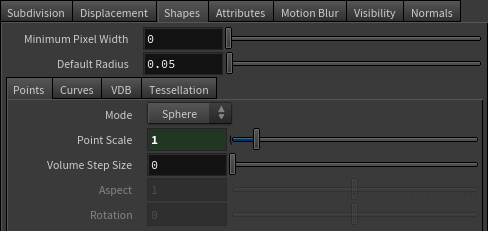
Particles As Surfaces
When rendered as disks, spheres, or quads, you can set the default radius of the particles.
Choose to render points as disks, spheres, or quads.
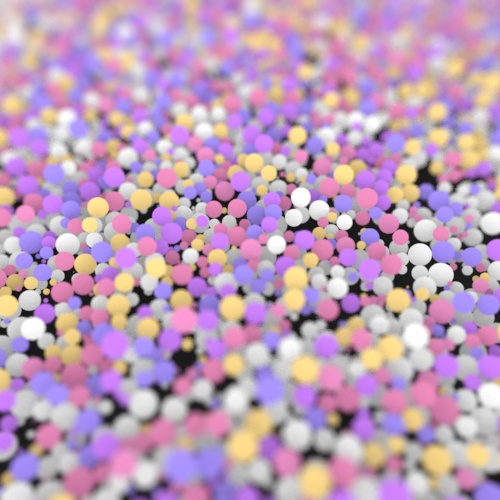 |
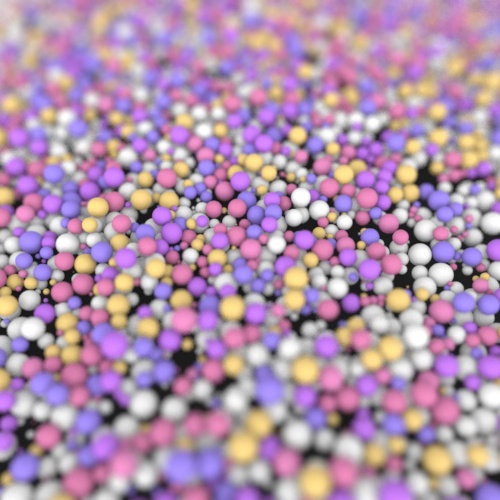 |
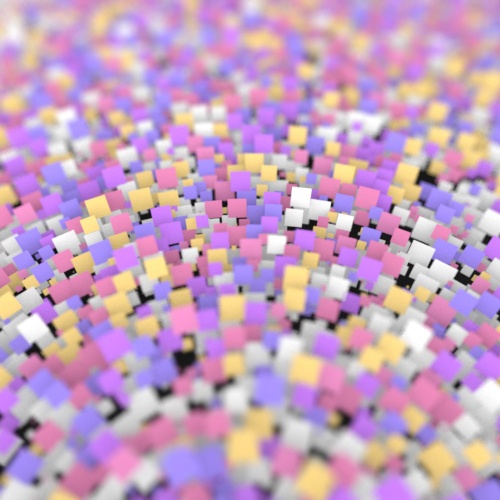 |
| disks | spheres | quads |
For quads, you can also set the default aspect_ratio and rotation.
Particles As Volumes
When the volume.step_size is set to a value above 0, the particle will be rendered as constant-density volume spheres. You also need to connect a volume shader to the OBJ to render properly.
- In the Shape tab of the Arnold properties (Tab > Arnold > Add Arnold Attributes), change the step_size to a value greater than 0 and set the Points Mode to sphere.
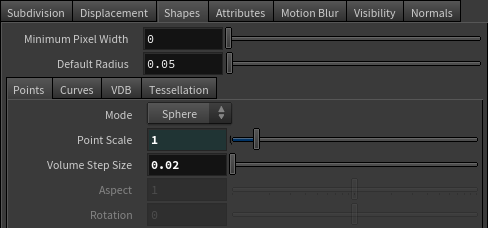
The radius of the particle will become a sphere filled with density.
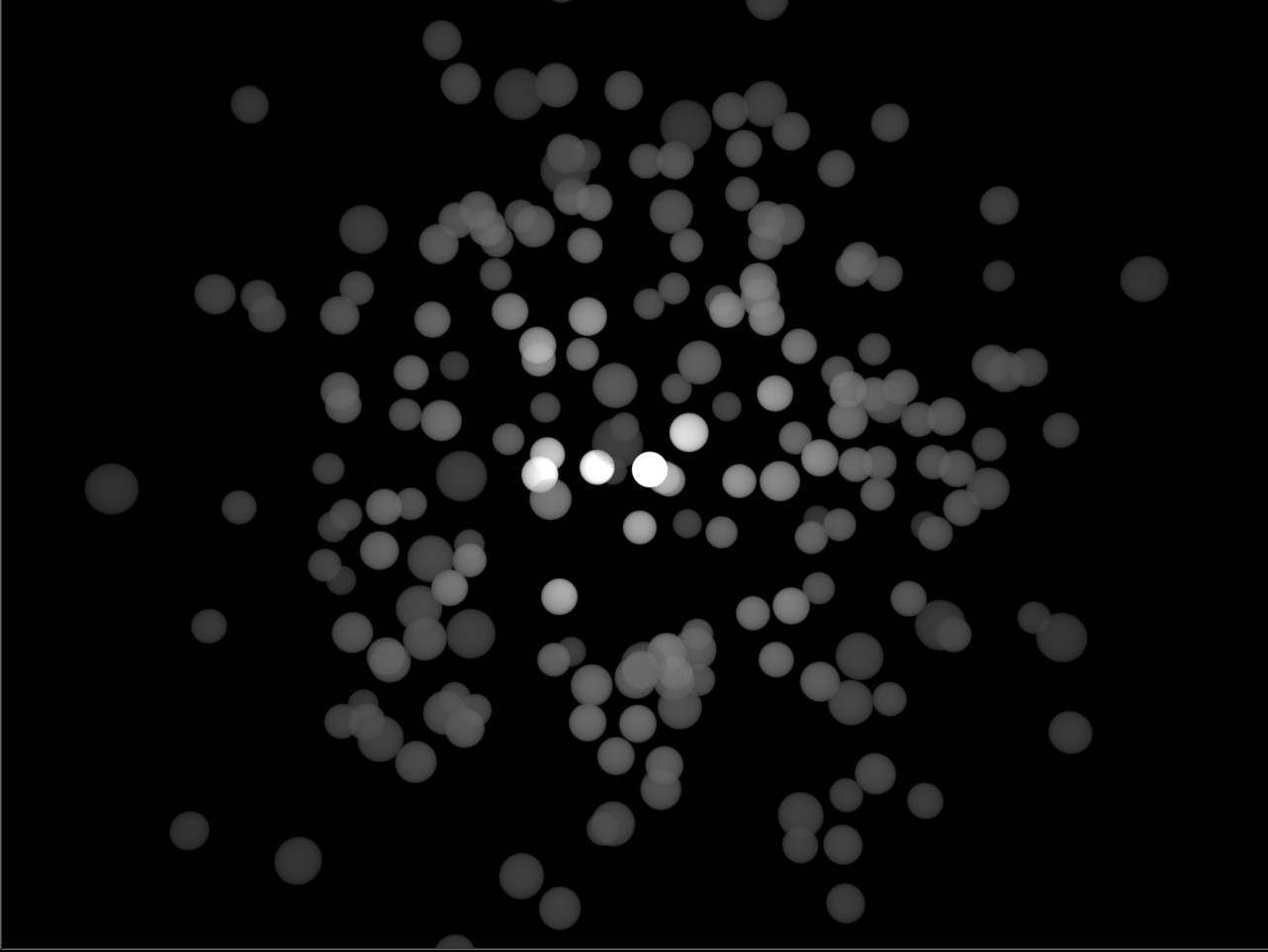
Particle Attributes
Radius, Scale, and Rotation properties can be overridden with attributes to provide more control or randomization of particles.
For example, use an attribcreate node (Tab > Attribute > AttribCreate) to create the attributes.
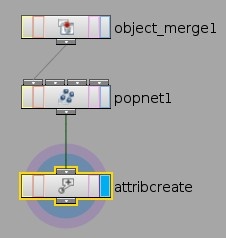
You can use the following float point attributes to set per-particle parameters. Both Arnold's and Houdini's names can be used, but Arnold takes priority if both are present.
| Arnold | Houdini |
|---|---|
| ar_radius | pscale |
| ar_rotation | spriterot |
| ar_aspect | spritescale* |
spritescale is a float[3] vector attribute, whereas ar_aspect which is just a float attribute.
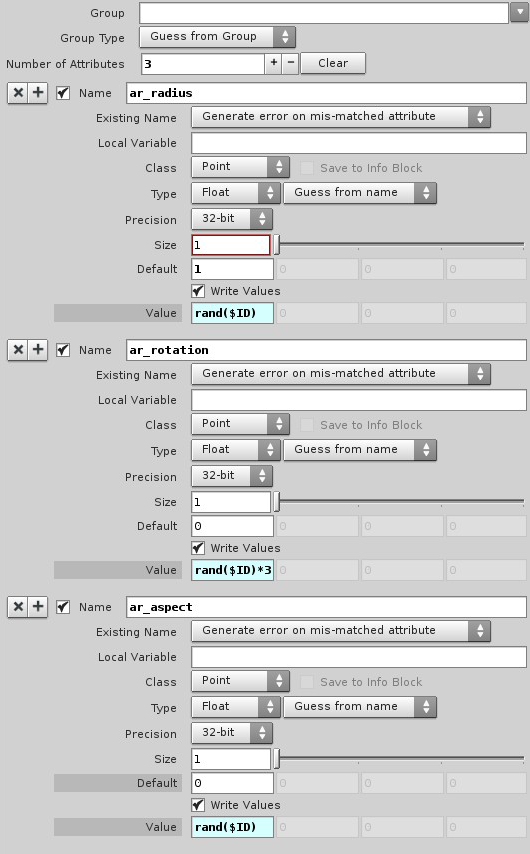
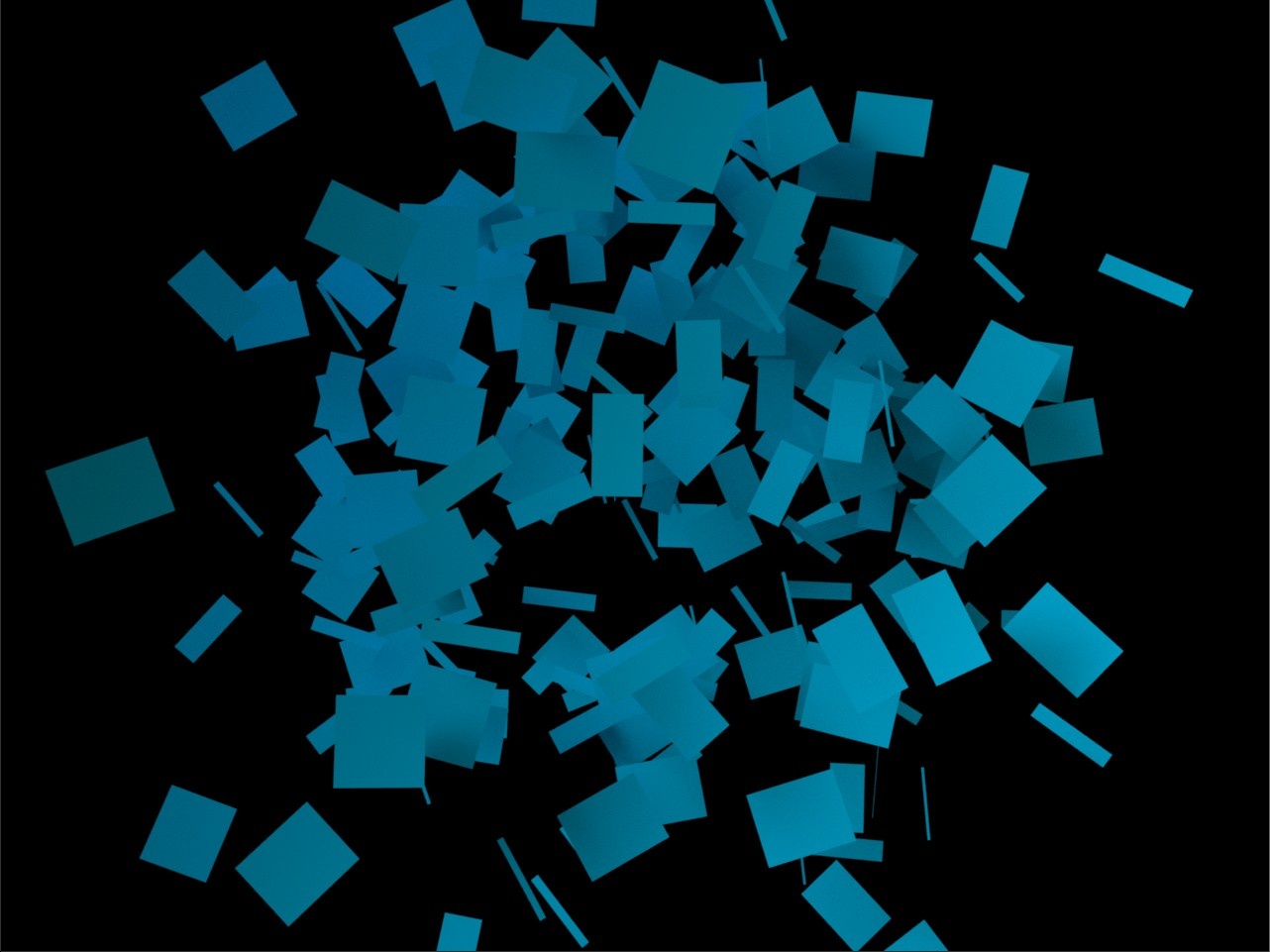
Points rendered as quads with random radius, rotation, and aspect.
